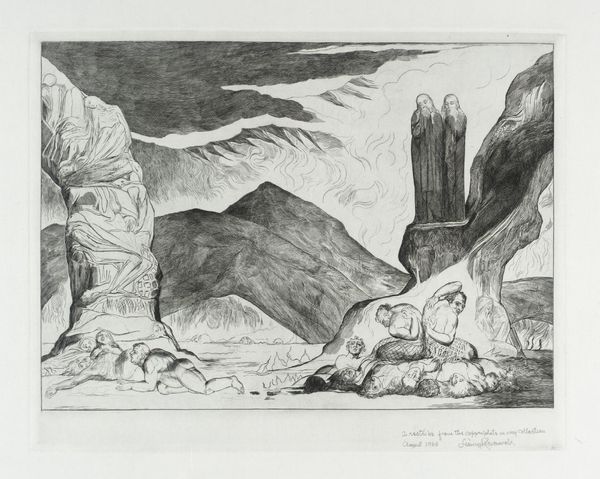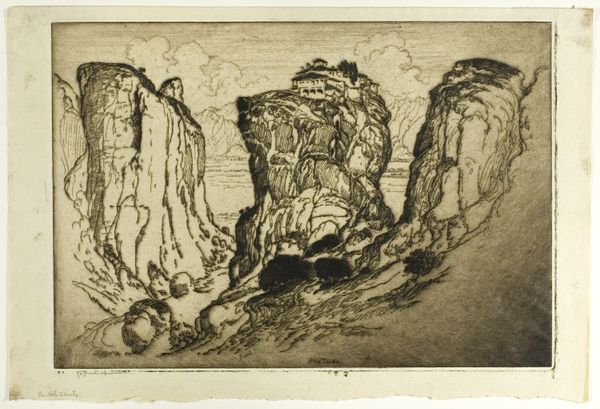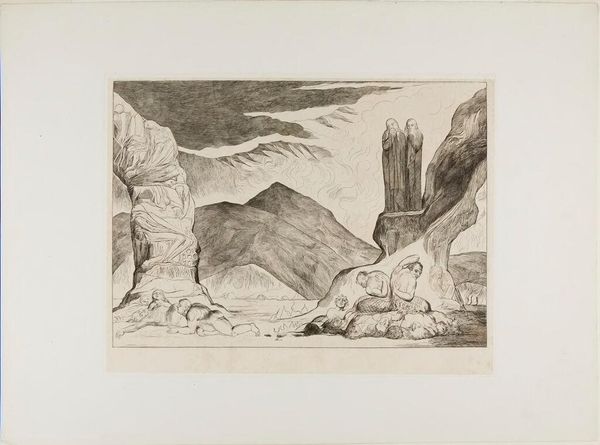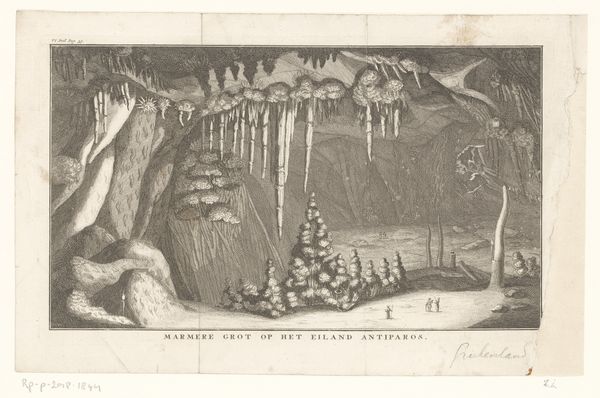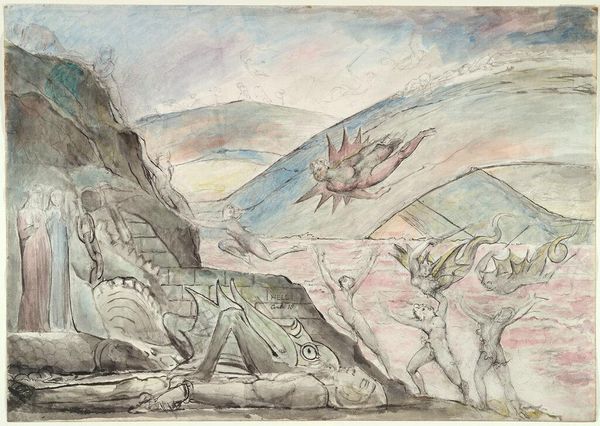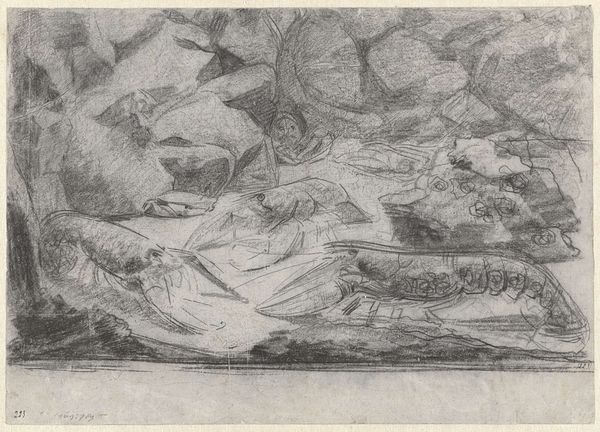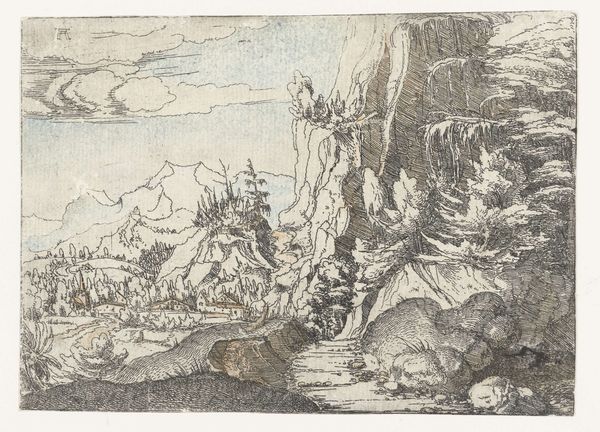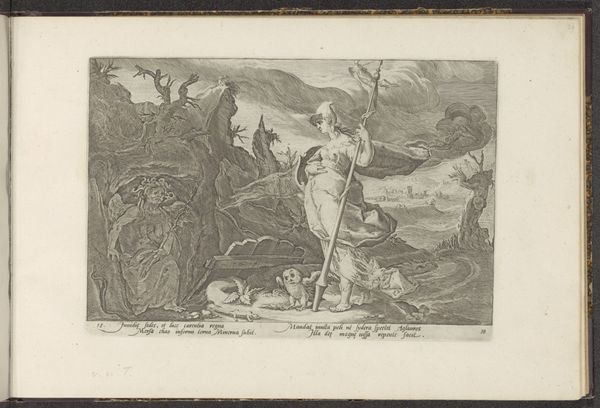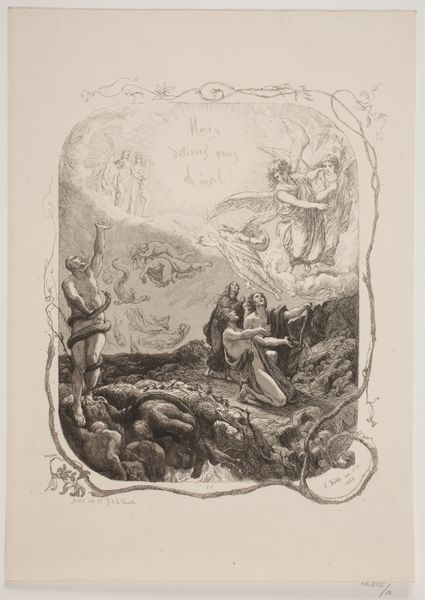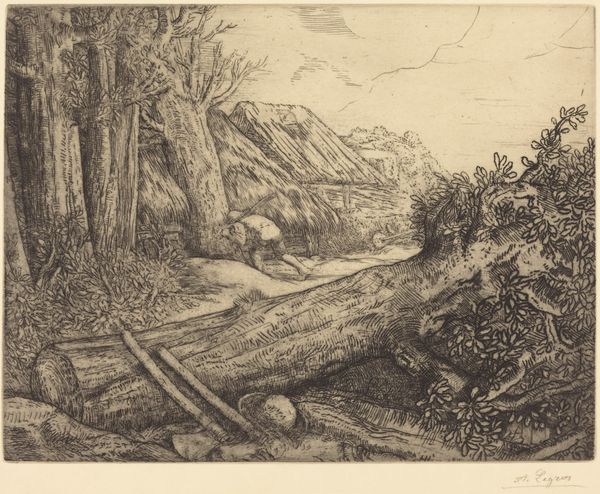
The Circle of the Falsifiers: Dante and Virgil Covering their Noses because of the st 1827
0:00
0:00
drawing, print, ink, engraving
#
drawing
#
narrative-art
# print
#
landscape
#
figuration
#
ink
#
romanticism
#
line
#
history-painting
#
engraving
Copyright: National Gallery of Art: CC0 1.0
William Blake created "The Circle of the Falsifiers" using engraving techniques. Notice how the composition, dominated by stark contrasts of light and shadow, visually separates the realms of the observers and the observed. The two figures of Dante and Virgil are perched atop the precipice, delineated with sharp, definitive lines against a backdrop of looming mountains and turbulent skies. Blake employs a rigid linearity in the figures of Dante and Virgil that contrasts dramatically with the contorted and fluid forms of the damned below. This formal choice isn't merely aesthetic; it's a semiotic device. The clean lines of the observers versus the chaotic forms of the falsifiers suggests a moral judgment. The landscape mirrors this contrast. Static, geometric mountains tower over the writhing humanity, underscoring the eternal and immutable nature of divine judgment. By emphasizing line and form, Blake transcends mere illustration. He engages with deeper philosophical questions about morality and eternal justice. This is how the formal elements of Blake’s prints aren't just aesthetic choices; they are profound commentaries.
Comments
No comments
Be the first to comment and join the conversation on the ultimate creative platform.
